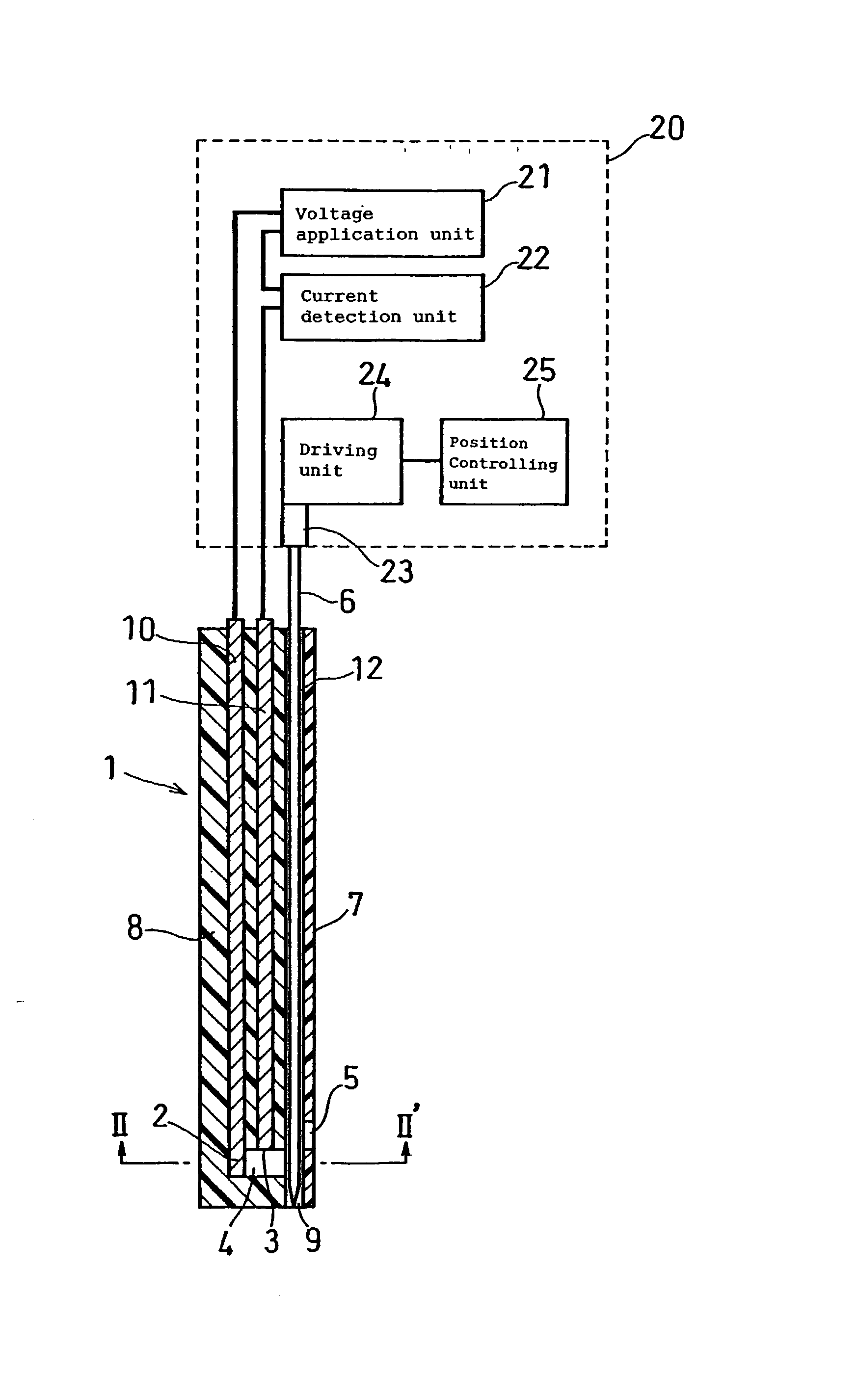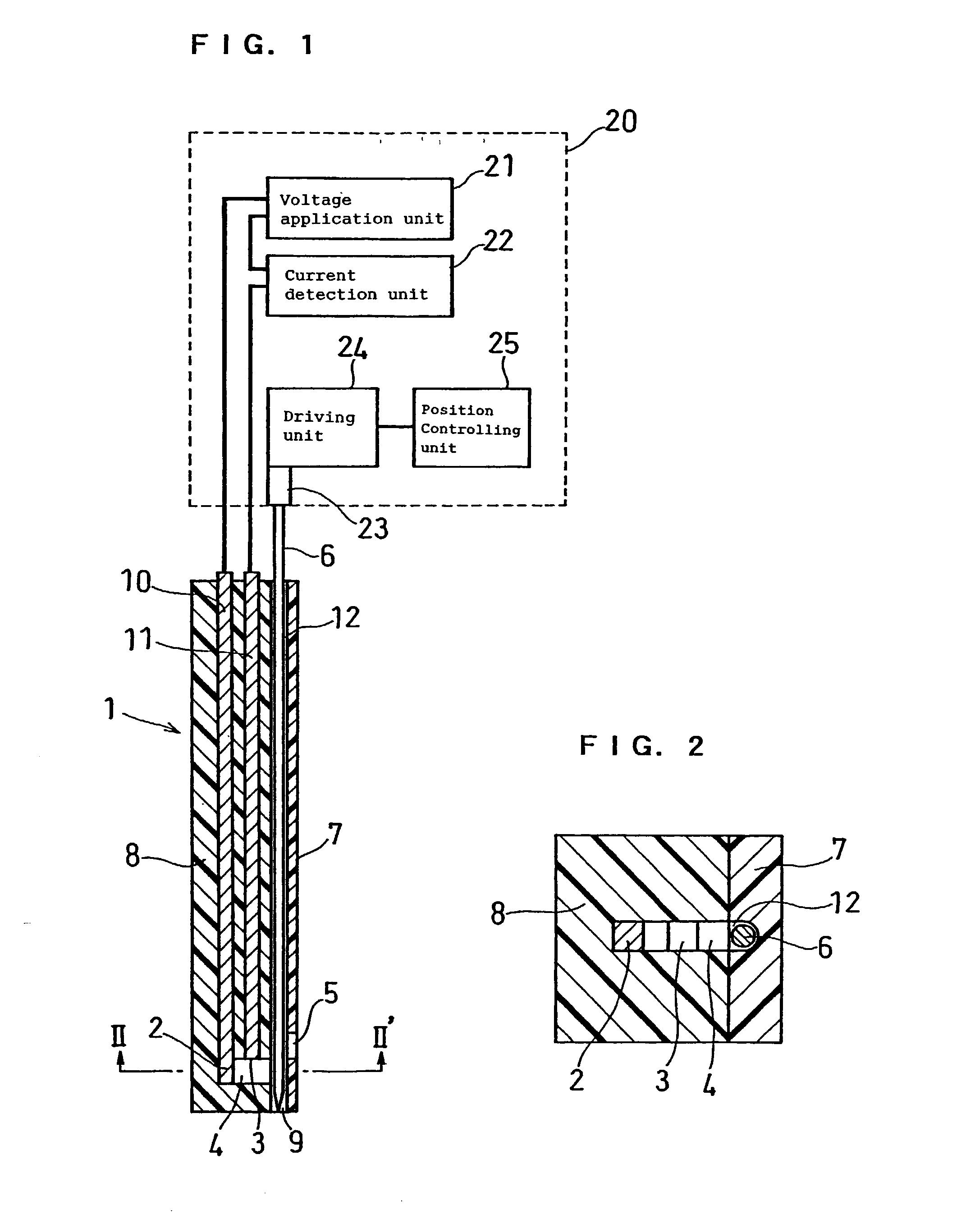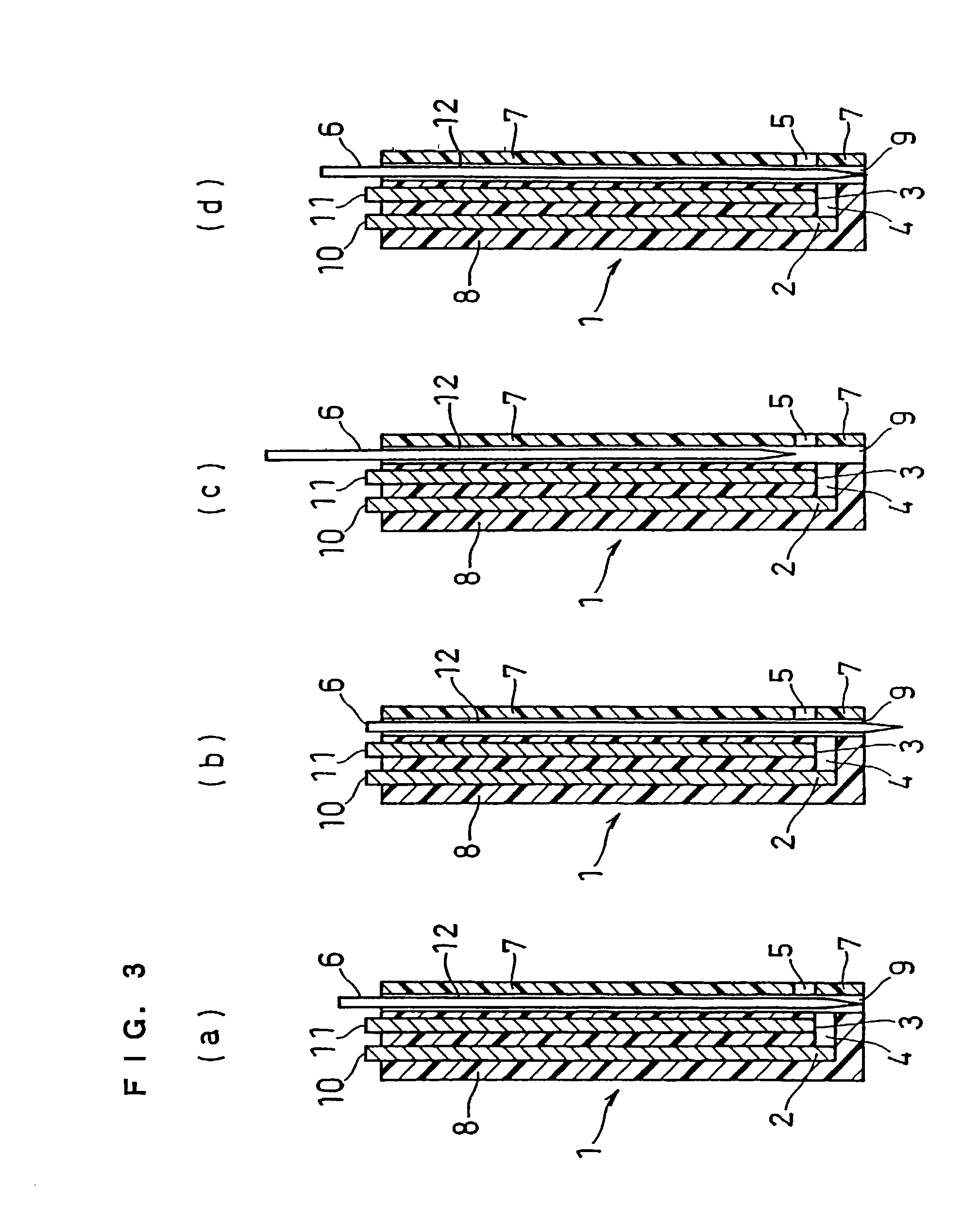Analytical element and measuring device and substrate quantification method using the same
- Summary
- Abstract
- Description
- Claims
- Application Information
AI Technical Summary
Benefits of technology
Problems solved by technology
Method used
Image
Examples
example 2
[0063] An analytical element of this example will be described with reference to FIG. 8 and FIG. 9. FIG. 8 is a longitudinal cross-sectional view of the analytical element of this example, and FIG. 9 is an exploded perspective view of the same analytical element from which the reagent layer and surfactant layer are omitted.
[0064] First, a silver paste is printed on an electrically insulating base plate 31 made of polyethylene terephthalate by screen printing to form a working electrode lead 32 and a counter electrode lead 33. Then, a conductive carbon paste containing a resin binder is printed on the base plate 31 to form a working electrode 34. The working electrode 34 is in contact with the working electrode lead 32. Further, an insulating paste is printed on the base plate 31 to form an insulating layer 36. The insulating layer 36 covers the outer periphery of the working electrode 34 so as to keep the exposed area of the working electrode 34 constant. Thereafter, a conductive ca...
example 3
[0070] FIG. 10 is a perspective view of an analytical element used in this example.
[0071] The analytical element of this example is composed of a base plate 51 having the same constitution as that of the base plate 31 of Example 2, a spacer 54, a mid cover 56 covering the spacer, a top cover 58, and a stopper 57. The spacer 54 has an depression 55 which is open at its both sides and bottom face, and the depression forms a cavity for accommodating a sample in combination with the base plate 51. The depression 55 of the spacer has openings 55a and 55b at its sides, and one of the openings serves as the sample supply port and the other serves as the air vent. The base plate 51 has a working electrode and a counter electrode connected to leads 52 and 53, respectively. These electrodes are exposed to the depression 55 of the spacer 54. The top cover 58 moves in parallel with the electrode-printed surface of the base plate 51 along grooves formed in the stopper 57.
[0072] After a sample is...
example 4
[0075] This example will be described with reference to FIG. 11. FIG. 11 is a schematic view showing the constitution of an analytical element and a measuring device used in this example.
[0076] The analytical element 70 of this example has the same structure as that of the analytical element used in Example 2 except for the absence of the top cover which is a member covering the opening. The measuring device comprises a voltage application unit 71, a current detection unit 72, a needle 76 detachably mounted to a holder 79, a needle driving unit 77, a needle position controlling unit 78, a first inner cover 62, a connecting part 73 for connecting the inner cover 62 to an inner cover driving unit 74, a second inner cover 64 pivotally mounted to the tip end of the first inner cover 62, the inner cover driving unit 74, an inner cover position controlling unit 75, and an outer cover 60. When used for measurement, the analytical element 70 is mounted to the measuring device and fixed insi...
PUM
| Property | Measurement | Unit |
|---|---|---|
| Electric potential / voltage | aaaaa | aaaaa |
| Transparency | aaaaa | aaaaa |
Abstract
Description
Claims
Application Information
 Login to View More
Login to View More - R&D
- Intellectual Property
- Life Sciences
- Materials
- Tech Scout
- Unparalleled Data Quality
- Higher Quality Content
- 60% Fewer Hallucinations
Browse by: Latest US Patents, China's latest patents, Technical Efficacy Thesaurus, Application Domain, Technology Topic, Popular Technical Reports.
© 2025 PatSnap. All rights reserved.Legal|Privacy policy|Modern Slavery Act Transparency Statement|Sitemap|About US| Contact US: help@patsnap.com



